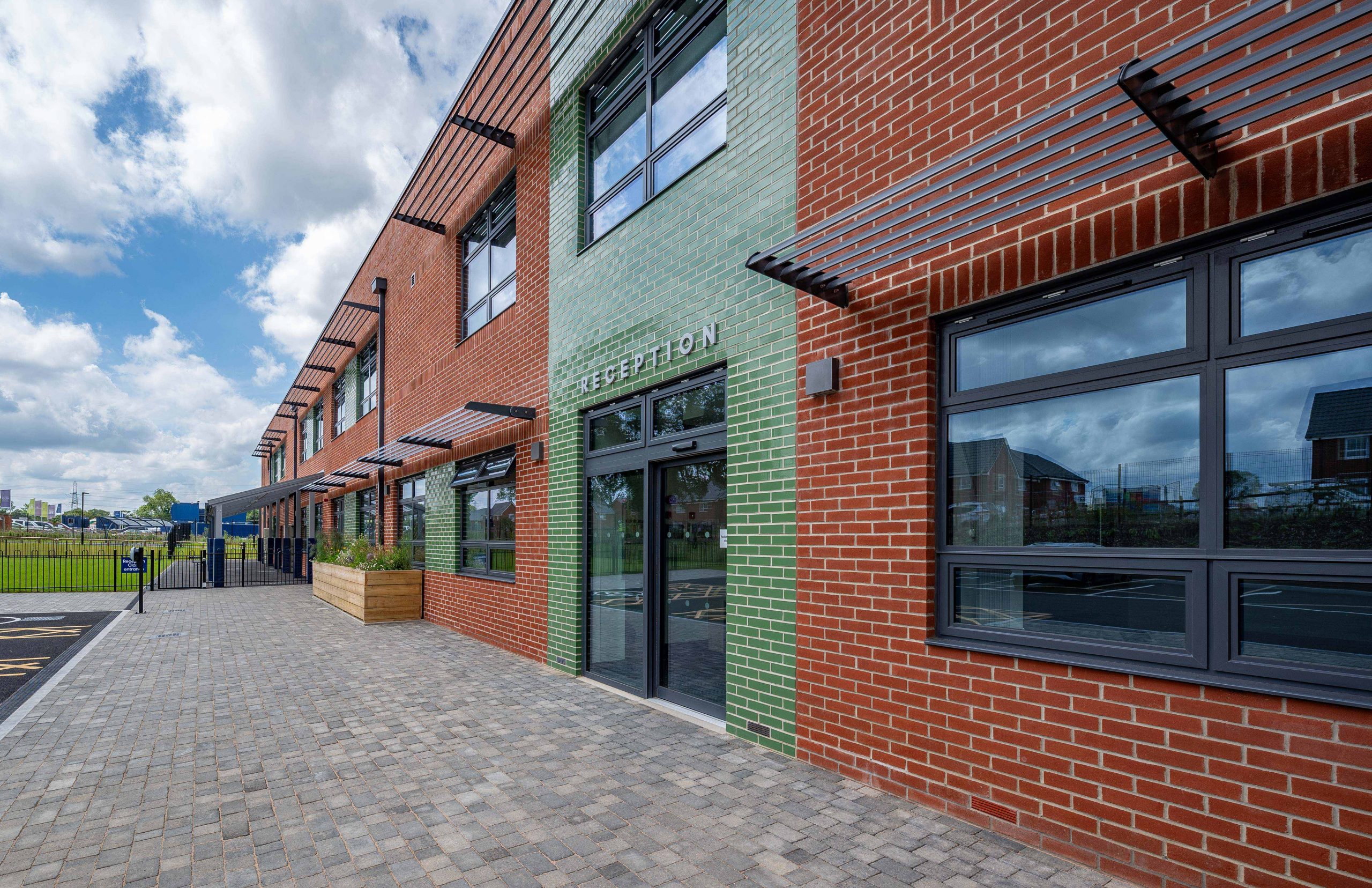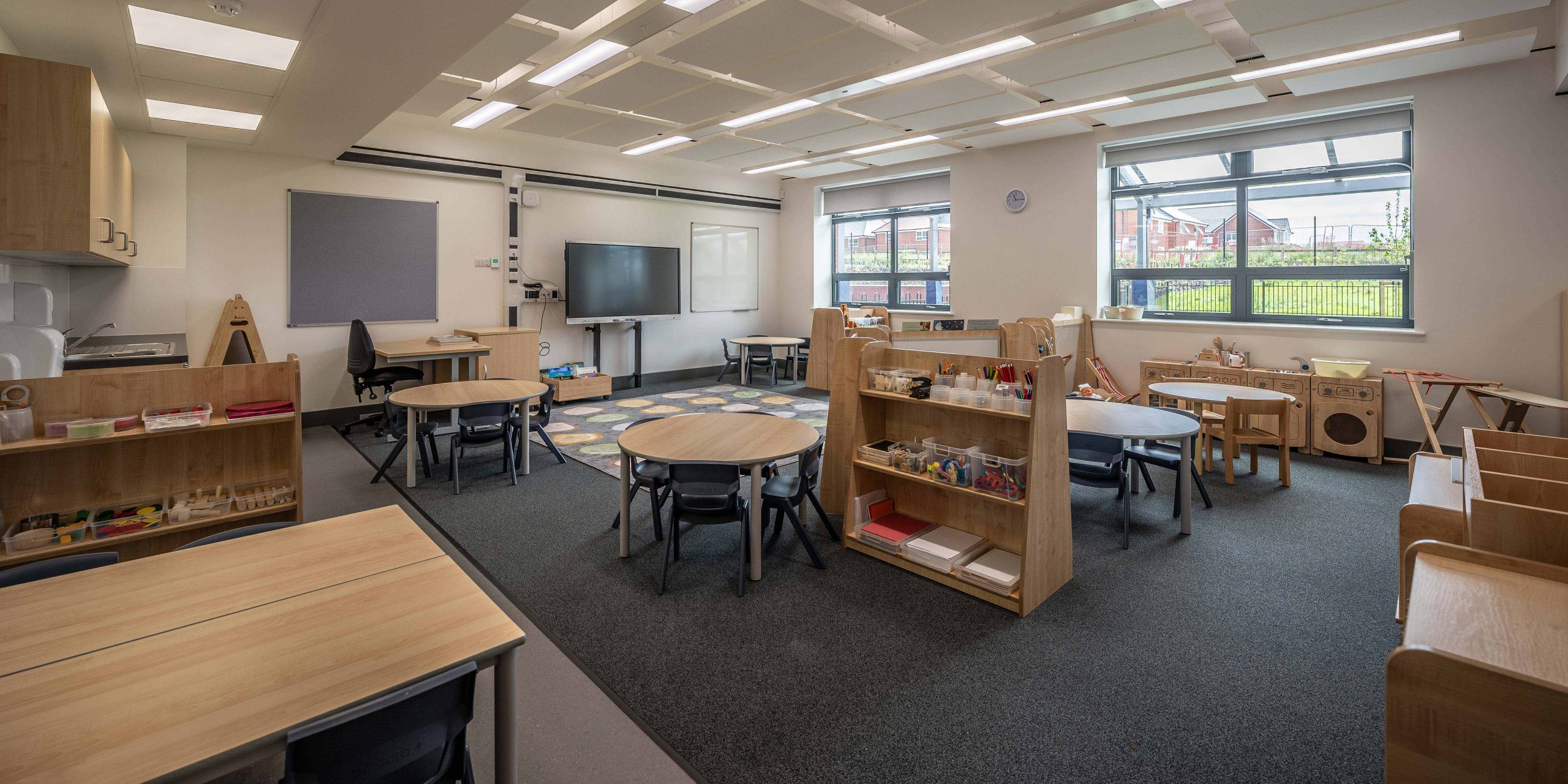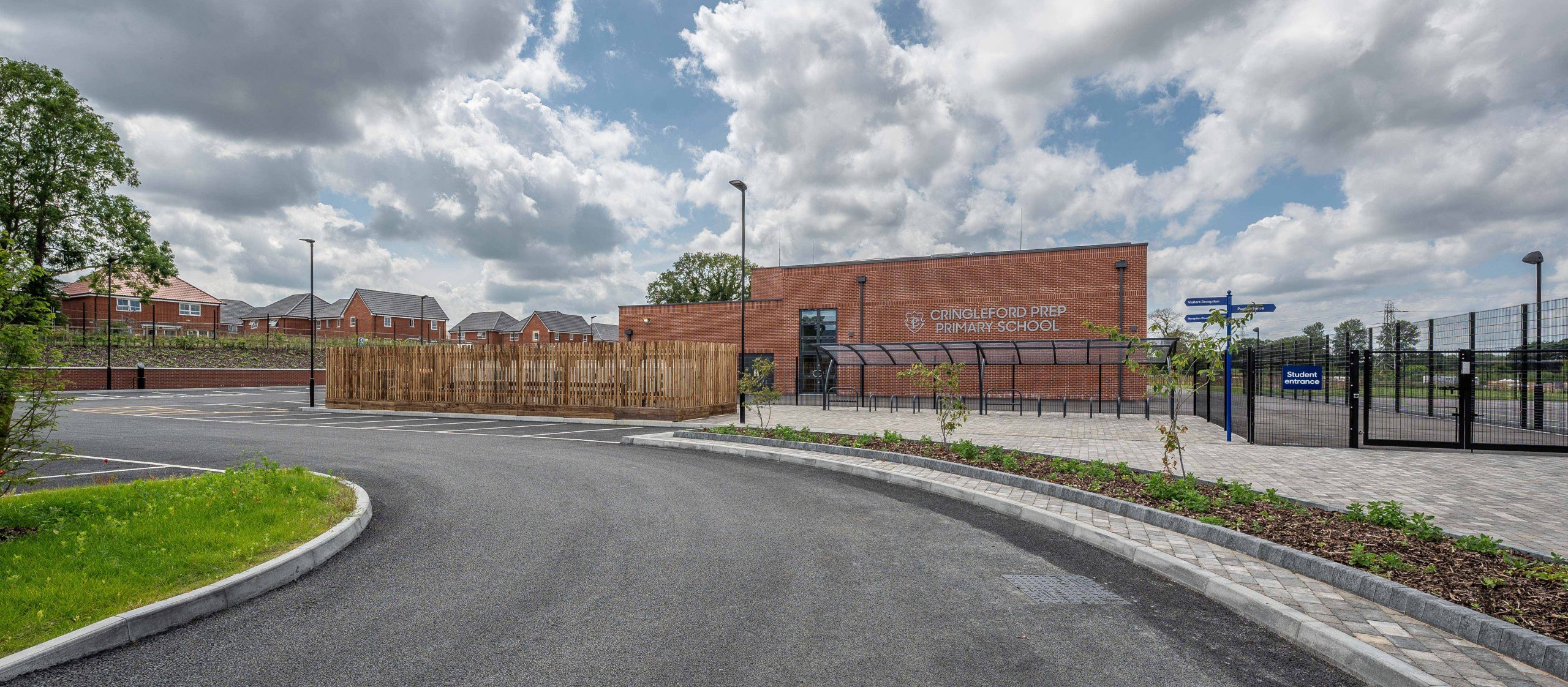Consulting | Design
Cringleford Prep Primary School
Client: Norfolk County Council

Project overview:
Norse Group’s Consulting division was selected to design a new 420-pupil-capacity, 2 FE primary school for a growing area on the outskirts of Norwich. The school was required as a positive solution to cope with the expansion of the local area, both now and for the future. The new school features a studio and hall, a multi-use games area (MUGA), playing field, an outdoor habitat area, a dedicated library and 14 classrooms.

Project impact:
The project has greatly benefited the local community by providing an education base in a rapidly growing residential area. The school can accommodate a pupil roll of up to 420 students, providing 2 forms of entry serving both local and wider communities.
There are further benefits seen in the possibility to open the school for community use, through the hire of buildings and sports pitches, making it a central part of the local area. The new primary school has also created employment opportunities.
Cringleford Prep is an exemplar modern facility designed for children to thrive and will stand as a legacy community hub for generations to come.
“We are overjoyed that our school has been completed and is ready for our pupils this September.
The amazing facilities that have been built at Cringleford Prep will create an environment that provides a place for our pupils to flourish and achieve their very best.”
Carmel Greene
Cringleford Prep Principal
“We are delighted with the accomplishment of the new Cringleford Prep school which will serve the growing, local community.
The new building will provide pupils with a beautifully modern educational setting with all the facilities they will need to succeed and achieve their potential.”
Craig Ward
Norse Group Project Manager

Sustainability:
The client had keen ambitions to achieve a number of modern environmental features. The Consulting team delivered these through the use of passive design strategies, innovative building systems such as low wattage motion and daylight-controlled lighting, air-source heat pumps and solar panels, resulting in a lower carbon footprint with zero reliance on fossil fuels.
In addition to a commitment to low energy use, the site provides enhanced habitat
for the local ecology through the use of strategic native planting, rain gardens, and built-in bird and bat boxes. The result is a site with increased biodiversity, efficient surface water management and a thriving ecology to minimise the impact of the built environment.